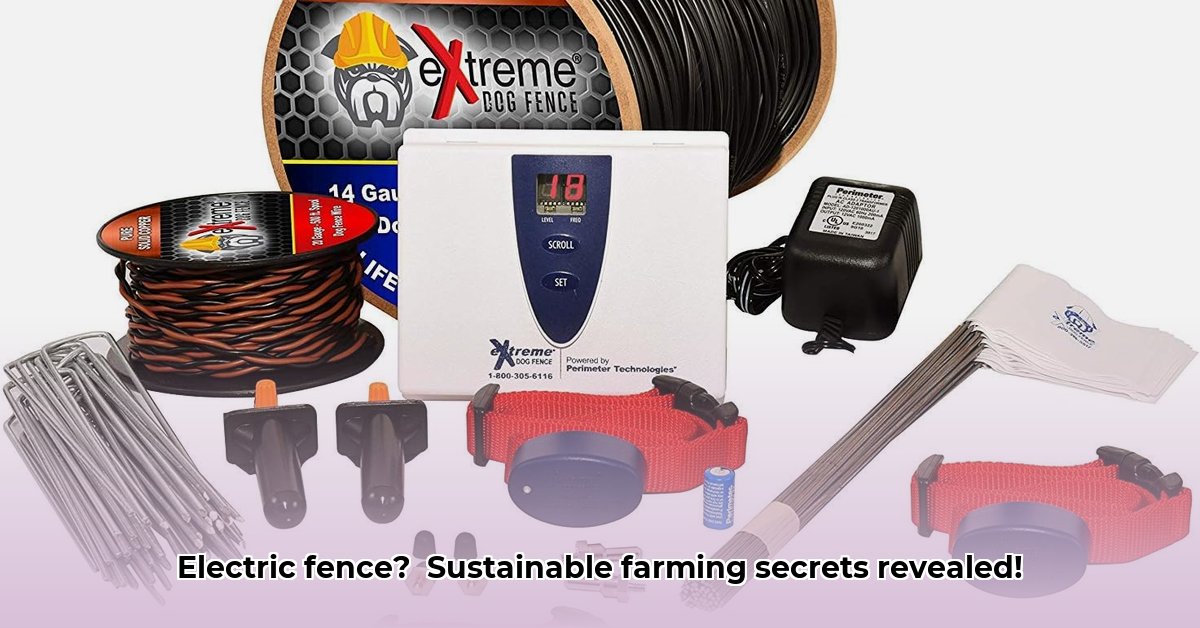
Choosing the right electric fence wire is crucial for efficient and sustainable farming. This guide compares popular brands—Red Brand and Speedrite—available at Tractor Supply, helping you select the ideal wire for your needs and budget. We'll cover selection, installation, maintenance, and the environmental benefits of electric fencing. For alternative fencing options, check out this resource on welded wire fencing.
Choosing the Right Electric Fence Wire at Tractor Supply
Selecting the right electric fence wire is like choosing the right tool for a job. The wire gauge (thickness) is key. A lower gauge number indicates thicker wire; thicker wire is stronger and less prone to breakage, especially with larger animals or challenging terrain. However, it typically costs more.
Red Brand frequently offers 17-gauge galvanized wire in 1320-foot rolls. Speedrite often provides longer rolls (around 2640 feet), potentially lowering the cost per foot. Speedrite’s gauge varies, requiring careful review of product specifics.
Here's a comparison:
| Feature | Red Brand | Speedrite | Considerations |
|---|---|---|---|
| Typical Gauge | 17 gauge (often) | Varies (check packaging!) | Lower gauge = thicker, stronger; ideal for larger animals and rough terrain. |
| Roll Length | 1320 feet | 2640 feet (often) | Longer rolls reduce splicing, potentially saving time and cost. |
| Cost per Foot | Generally Higher | Generally Lower | Balance cost per foot against the total length needed. |
| Availability | Widely Available at Tractor Supply | Widely Available at Tractor Supply | Check local store availability. |
Consider your:
- Livestock: Larger animals need stronger wire (lower gauge).
- Terrain: Rough terrain requires more durable wire.
- Budget: Thicker wire is more durable but costs more upfront.
Installing Your Electric Fence: A Step-by-Step Guide
Installing an electric fence is manageable, even for beginners. Follow these steps:
- Planning: Map your fence line, considering existing structures, gates, water sources, and livestock behavior.
- Post Placement: Use sturdy posts (metal T-posts are common) spaced appropriately (consult manufacturer recommendations).
- Wire Attachment: Secure the wire to posts using insulators to prevent short circuits and protect livestock. Maintain consistent tension.
- Energizer Connection: Connect the wire to your energizer, following instructions carefully. Grounding is crucial.
- Testing: Before use, test the fence with a fence tester to ensure proper voltage and identify any breaks.
Safety First: Always turn off the energizer before working on the fence and wear insulated gloves.
Maintaining Your Electric Fence
Regular maintenance ensures long-term effectiveness:
- Routine Inspections: Inspect monthly for broken wires, loose connections, or damaged insulators.
- Insulator Cleaning: Clean insulators regularly to maintain conductivity.
- Energizer Monitoring: Check that power supplies (battery or outlet) are working and monitor for energizer faults.
- Troubleshooting: If the fence stops working, systematically check the energizer, connections, and grounding.
Long-Term Value and Environmental Impact
While the upfront cost may seem higher than traditional fencing, electric fencing provides long-term savings and environmental benefits:
- Reduced Labor: Less maintenance than traditional fences.
- Improved Grazing Management: Rotational grazing improves pasture health.
- Sustainable Practices: Reduced land clearing compared to traditional fencing.
Conclusion
Choosing the correct electric fence wire is vital for efficient and sustainable farming. By carefully choosing the right wire for your needs, installing it correctly, and maintaining it regularly, you'll create a reliable system that benefits your farm and the environment. Remember to research options, consult experts if necessary, and always prioritize safety.